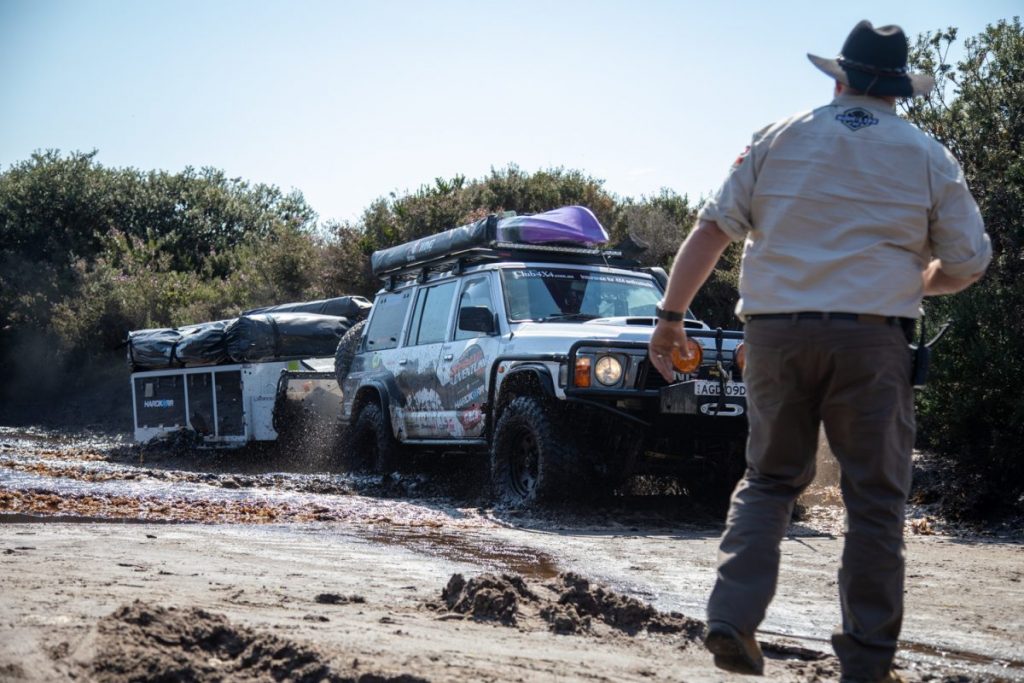
Free monthly entries to ALL giveaways
+1 every month
+5 every month
+10 every month
5%
125
150
350
100
100
50
Cancel membership anytime
Terms apply
apply

Written by
Admin
Published
August 20, 2024
The rugged landscapes of Australia have long been a siren call for off-roading enthusiasts. From the sun-scorched deserts to the dense bushland, each environment provides a unique challenge for drivers. In recent years, technology has begun to revolutionize this adventurous pastime, changing the way Aussies interact with their vehicles and the great outdoors.
Automotive technology advancements have significantly enhanced the capabilities of off-road vehicles. Contemporary four-wheel drives come equipped with systems designed to optimize performance across various terrains. Features such as hill descent control, advanced traction control systems, and electronically locking differentials allow for superior control and ability in challenging conditions.
Data trends indicate that Australian consumers are increasingly interested in vehicles that offer both comfort and off-road capability. Sales statistics from industry bodies such as the Federal Chamber of Automotive Industries (FCAI) show a steady increase in the purchase of 4x4s and SUVs with advanced off-road systems. For instance, in 2021, the SUV segment represented approximately 49% of all new vehicle sales in Australia, showcasing the demand for versatile and capable vehicles.
Another technological advancement is the use of alternative energy sources. The introduction of electric and hybrid off-road vehicles is set to make a significant impact on the scene. The anticipated release of vehicles like the Rivian R1T and the hybrid Ford F-150 is expected to offer off-road enthusiasts a balance of power and efficiency, with lower environmental impact.
Modern technology has also transformed navigation and communication for off-roaders. Gone are the days of paper maps and guessing. GPS and satellite technology now offer real-time mapping and tracking, allowing adventurers to plot their course with precision and share their location with others.
Communication tools have advanced well beyond the traditional CB radio. Satellite phones and high-powered radio systems allow for communication in even the most remote areas. Additionally, smartphone applications provide off-roaders with updated information on weather conditions, trail closures, and even connect them with other enthusiasts in the area.
The Australian off-road experience is further enhanced by smart accessory integration. From winches that can be controlled via a smartphone app to tire pressure monitoring systems that alert the driver to changes in real-time, these tools add a layer of safety and convenience.
Drones, too, have found their place in the off-roader’s kit. Used to scout ahead and assess the difficulty of terrain, drones provide a bird’s-eye view that can prevent drivers from facing unexpected obstacles. With advanced features like obstacle avoidance and follow-me mode, drones are becoming trusted companions on off-road adventures.
In conclusion, technology is reshaping the future of off-roading in Australia, making it safer, more accessible, and more exhilarating than ever before. As vehicles become more sophisticated and the integration of digital systems more seamless, the boundaries of where Australians can travel on four wheels continue to expand. Whether it’s through electric powertrains, intuitive navigation tools, or smart accessories, technology is driving the evolution of the great Aussie off-roading tradition.
While embracing these technological advancements, it’s crucial for off-roaders to also focus on the sustainability and conservation of the natural environment. As the industry grows, the responsibility on enthusiasts and manufacturers alike is to ensure that the thrill of off-roading can be enjoyed for generations to come, without compromising the beauty and integrity of Australia’s wild landscapes.